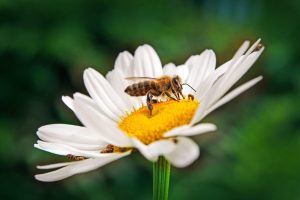Pollinators play a vital role in our ecosystem, ensuring the reproduction of countless plant species and contributing to biodiversity. However, the populations of bees, butterflies, hummingbirds, and other pollinators have been declining in recent years. By creating a thriving pollinator garden with native plants, you can make a positive impact and provide a sustainable habitat for these important creatures. In this blog post, we will explore the benefits of native plants, identify suitable species for your region, and provide tips for designing, maintaining, and enjoying your own pollinator garden.

- The Benefits of Native Plants for Pollinators Native plants have coevolved with local pollinators over thousands of years, making them perfectly adapted to meet their specific needs. They provide essential nectar, pollen, and shelter for bees, butterflies, and other insects. Unlike some non-native plants, native species have the advantage of synchronizing their bloom times with the emergence of local pollinators, ensuring a consistent food source throughout the season. By incorporating native plants into your garden, you create a natural haven for pollinators, contributing to their survival and overall ecosystem health.
- Identifying Native Plants for Your Region To create a successful pollinator garden, it is important to choose native plants that are well-suited to your region’s climate, soil type, and sunlight conditions. Start by researching local resources such as native plant societies, botanical gardens, or online databases that provide lists of native plants specific to your area. These resources can help you identify native flowering plants, shrubs, and trees that will attract and support local pollinators. Consider factors such as bloom times, plant heights, and preferences of specific pollinator species when selecting your plants.
- Designing and Planning Your Pollinator Garden A well-designed pollinator garden maximizes the diversity of flowering plants and provides a continuous supply of nectar and pollen throughout the growing season. When planning your garden, aim for a variety of plant heights, colors, and shapes to accommodate different pollinator species. Incorporate native grasses, which serve as host plants for butterflies and provide shelter for insects. Plant in clusters rather than single plants to create more appealing foraging areas for pollinators. Additionally, consider including water sources and creating sheltered spaces using rocks or logs to enhance the habitat.
- Supporting Lifecycle Needs Pollinators to have different lifecycle requirements, so it’s crucial to provide resources for their entire life stages. Include host plants that cater to the needs of butterfly larvae, such as milkweed for monarch butterflies. Incorporate plants that provide nesting sites for solitary bees, such as small piles of twigs or hollow plant stems. Add shallow dishes or small ponds to offer water sources for butterflies and bees. By addressing these lifecycle needs, your pollinator garden becomes a complete habitat that supports the entire lifecycle of these beneficial creatures.
- Maintaining a Pollinator Garden Proper maintenance ensures a healthy and vibrant pollinator garden. Water your plants as needed, keeping in mind the specific water requirements of each species. Mulching can help retain moisture and reduce weed competition. Consider using organic mulch to avoid harmful chemicals. Regularly inspect your plants for signs of pests or diseases and take appropriate organic pest control measures if necessary. Minimize or eliminate the use of pesticides, as they can harm pollinators. Instead, encourage natural pest control through biodiversity and ecological balance.
- Observing and Enjoying Pollinators A pollinator garden not only serves its ecological purpose but also provides a wonderful opportunity to observe and enjoy these fascinating creatures. Set up a comfortable seating area or install bird feed.

Everything is very open with a precise clarification of the challenges. It was really informative. Your website is useful. Thanks for sharing!
Thanks-a-mundo for the post.Really thank you! Awesome.
Muchos Gracias for your article.Really thank you! Cool.